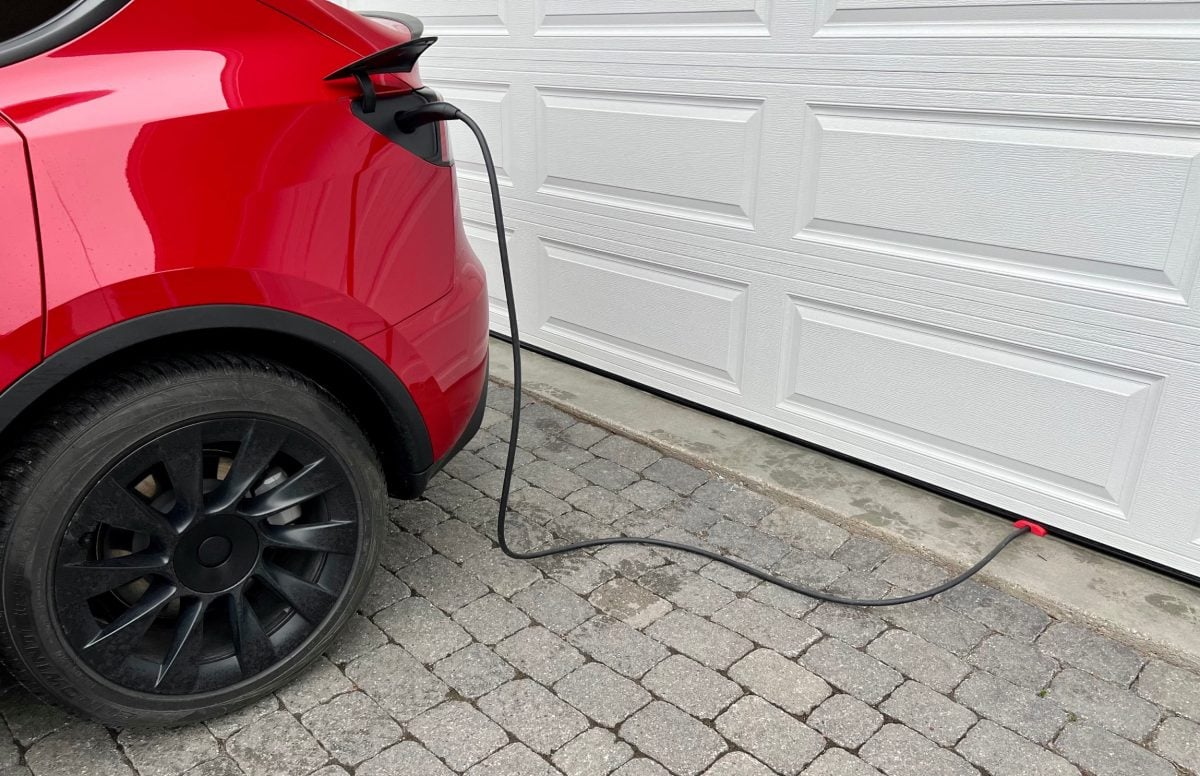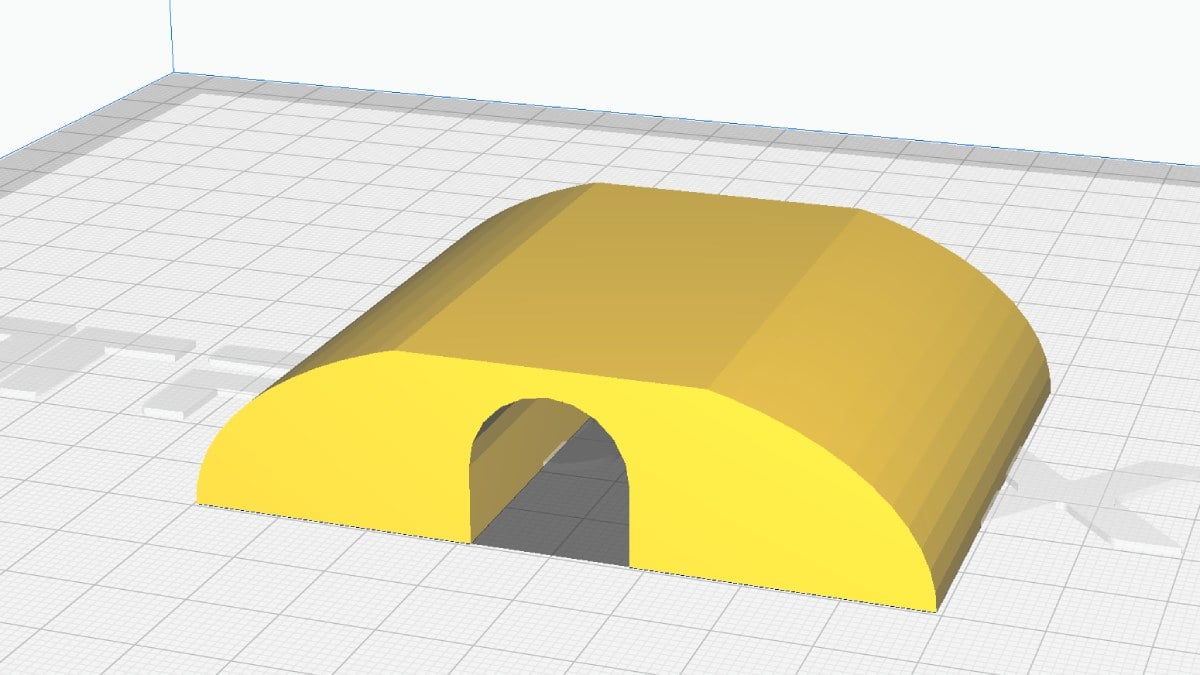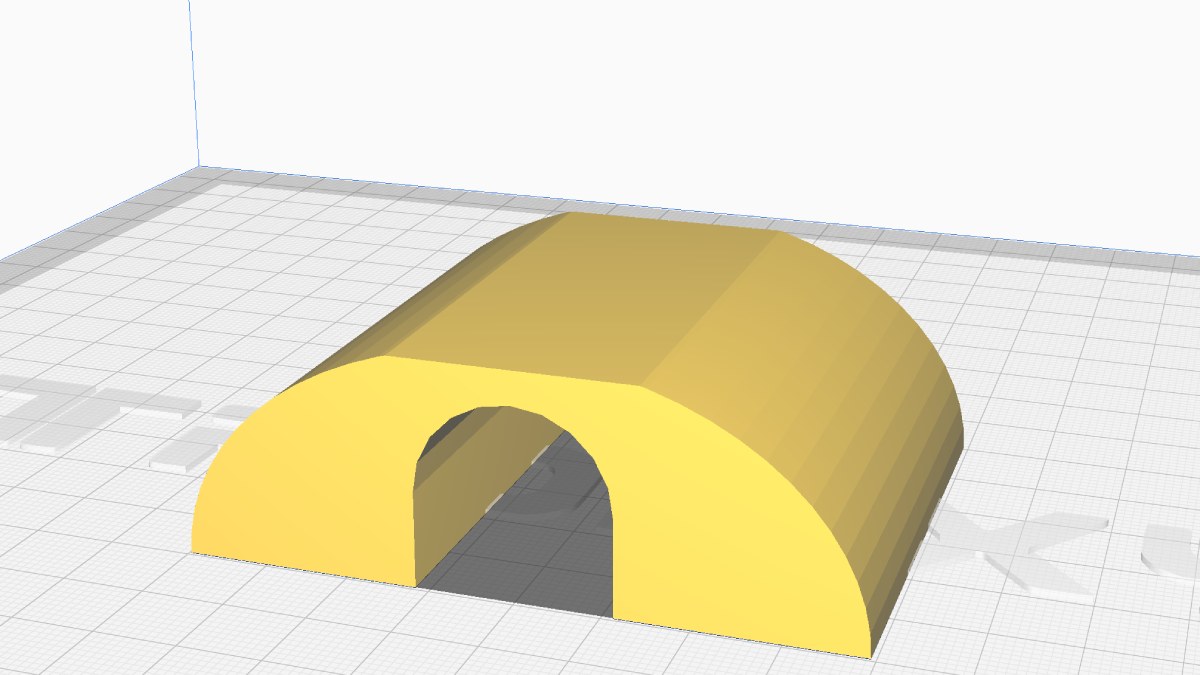Most of us choose to have the home EV charging station installed on the inside of the garage. But now and then, you need to charge a car parked outside near your garage, whether it’s your own car or a visiting friend’s EV. A garage door is very heavy, so repeatedly closing the garage door onto the charging cord is going to crimp it and damage it over time. A damaged cord will perform poorly and could pose a safety risk.
Existing Products You Can Buy
An easy solution is some kind of spacer that can hold the weight of the garage door while leaving a tunnel for the charging cable to pass through. There are several highly rated products on Amazon that can do the job for a small cost. There is one from Spigen that is specifically designed for the slim cord on the Tesla Mobile Connector and the home Wall Connector. Another protector from SplashNColor will fit cords up to 20mm in diameter.
3D Print Your Own Using My Files
I like to take a DIY approach when possible. I own a cheap 3D printer, and I like to create useful widgets to make life a bit easier. I’ve designed and tested my own version of the EV cord garage door protector, and you can download my files below to print it at home. If you don’t own a 3D printer, maybe you have a friend who does. My local public library can also 3D print files for a small fee.
Here on this site, we reviewed 16+ EV chargers in the last two years, and several different models are still used daily. There is a large variability in cable diameter between different charging stations. Less expensive (but powerful) EV chargers typically use thicker and bulkier cables than premium products.
I measured the Tesla Gen 3 Wall Connector to have a 14.5mm diameter. This is very impressive for a 48-amp capable cord. For the Tesla Wall Connector and the Mobile Connector, I designed a protector with a 16mm diameter tunnel. After several iterations, I settled on a total height of 20mm. This gives the protector enough durability to hold the garage door over the cable while leaving only a small gap off the ground.
The thickest cord in my collection was 21mm on the Tera EV Charger. This is another 48-amp capable cord, but because it was made will less expensive wire and insulation. I made a second cord protector version with a 23mm tunnel and 27mm height.
Files are provided as-is, for free. I would recommend using any such garage door stopper near the center of the door, not at the sides, to prevent imbalance and torque on the door guide rails. Especially on wide double-garage doors.
How to Print
I used UltiMaker Cura as my slicing software to configure the print. A 0.3mm layer height and 40% infill density is a good balance of printing speed and strength. I recommend rotating and printing the file on its side because the arch prints cleaner, and therefore stronger. The 21mm version prints in about 2 hours, and the 23mm version takes closer to 3 hours. I’m printing using the most basic cheap PLA material from Amazon. You’ll need 40-55 grams of material depending on the infill density and size of the protector.
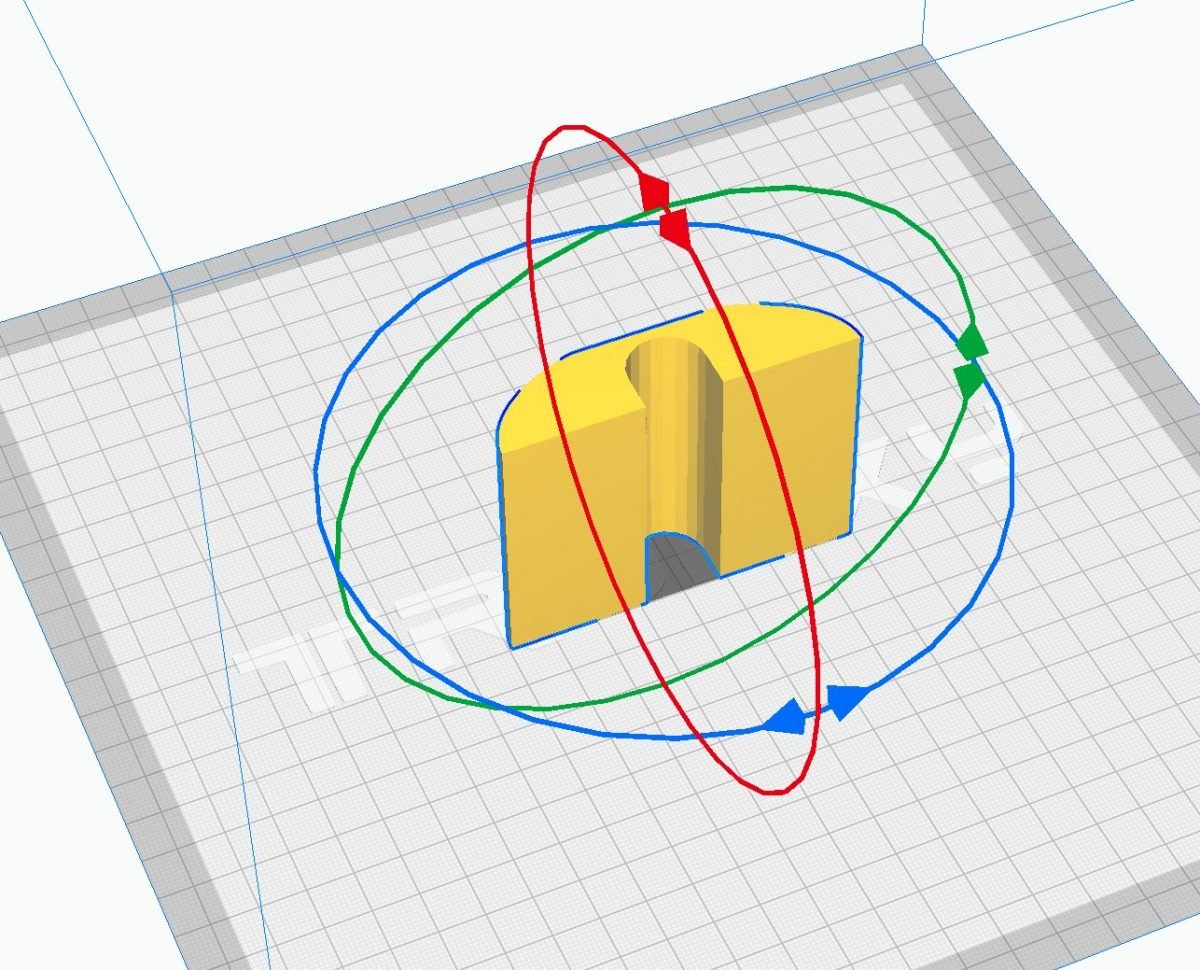
Durability Test
I’ve closed the garage door on my first print at least 20 times now, and apart from minor scuffing, it is holding up strong with no signs of cracking or failure. It should withstand an accidental run over by a car too, provided it’s sitting the correct side up.
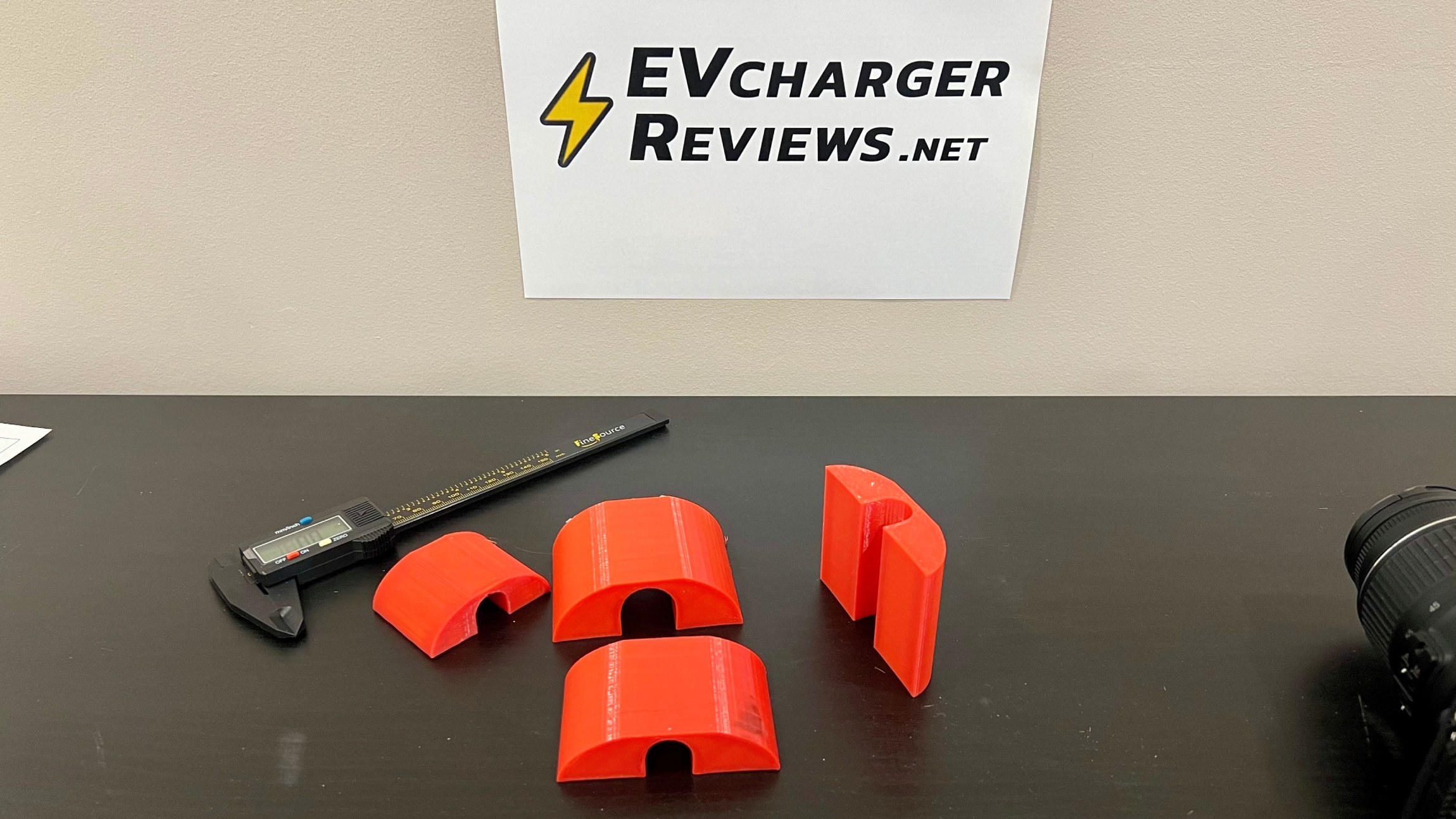
Related
- What is “Yo-Yo’ing” in the Context of EV Charging?
- How to Protect the EV Battery in the Extreme Cold
- What is the blue dot on the Tesla charging status bar?

